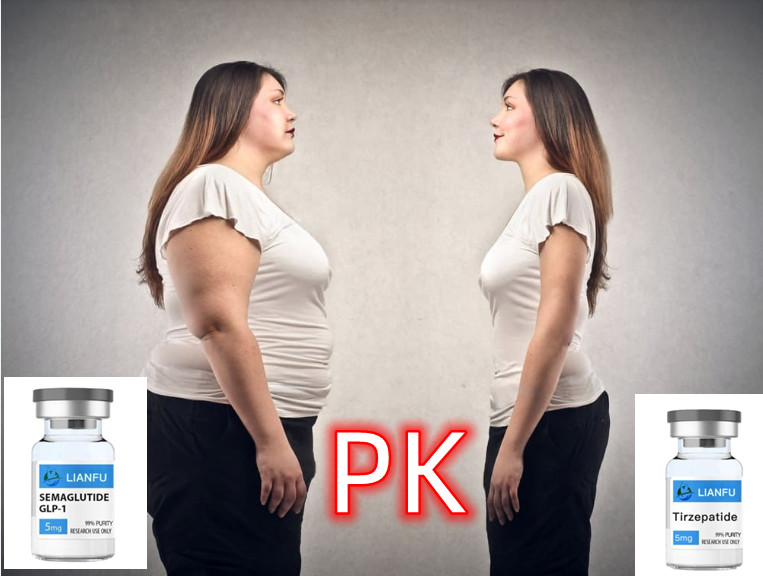If you are struggling with overweight and obesity or are living with type 2 diabetes, you’ve likely heard of Wegovy and Ozempic. Both medications are GLP-1s (glucagon-like peptide-1 receptor agonists) and contain the same active ingredient (semaglutide). Since the two drugs have the same active ingredient, it is fair to ask: is Wegovy the same as Ozempic?
The answer is yes…and no. Wegovy and Ozempic are the same drugs, sold under different brand names. The main differences are the amount of semaglutide in each pen and what they’ve been approved for. Semaglutide was first approved under the brand name Ozempic in 2017 as a treatment for type 2 diabetes. In 2021, the US Food and Drug Administration (FDA) approved the drug under the brand name Wegovy as a weight loss medication. Doctors often prescribe both for weight loss, but there are a few key differences between them.
Wegovy vs. Ozempic: are they the same?
Wegovy and Ozempic are brand-name injectable prescription drugs containing the same active ingredient: semaglutide. Both belong to a class of drugs known as glucagon-like peptide-1 receptor agonists (GLP-1 agonists or GLP-1s). Other drugs in this class include Rybelsus (which is an oral medication), Saxenda, Trulicity, and Victoza.
Although Ozempic and Wegovy share many similarities, the FDA has approved Ozempic and Wegovy for different uses.
The FDA has approved Ozempic for:
- Controlling blood sugar in adults over 18 years old with type 2 diabetes mellitus
- Reducing the risk of major cardiovascular health problems, such as heart attack, stroke, and death in adults with type 2 diabetes and heart disease
In contrast, the FDA has approved Wegovy for chronic weight management in people 18 years and older with either:
- Obesity: body mass index (BMI) of 30 kg/m2 or greater
- Overweight: BMI of 27 kg/m2 or greater with at least one weight-related medical condition, such as type 2 diabetes, high blood pressure (hypertension), or high cholesterol
In 2024, the FDA approved an additional indication for Wegovy: to reduce cardiovascular risk in adults with obesity or overweight and established heart disease.
Another notable difference between the two drugs is how you use Ozempic and Wegovy pens. With Wegovy, each injection pen has a built-in needle. After you use the pen once, you’ll dispose of it in a sharps container. Ozempic, on the other hand, comes with needles that you’ll attach to the injector pen before each dose. Then you’ll dispose of the needle in a sharps container, but continue using the same pen several times.
Risks and side effects of Ozempic and Wegovy
Since Ozempic and Wegovy contain the same active ingredient, semaglutide, side effects are very similar for the two drugs. In general, side effects are most common when you start using Ozempic or Wegovy and as you increase your dose. Higher doses of Wegovy and Ozempic can have a higher risk of side effects.
Common side effects of Ozempic and Wegovy include:
- Nausea
- Vomiting
- Abdominal pain
- Diarrhea or constipation
- Injection site reactions, such as pain or skin irritation
Serious side effects are possible with Ozempic and Wegovy but rare. They can include:
- Pancreatitis (inflammation of the pancreas) or gallbladder problems
- Hypoglycemia (low blood sugar) when taken along with insulin or certain diabetes pills like glimepiride or glipizide
- Kidney injury
- Diabetic retinopathy
- Severe allergic reaction
When deciding between Wegovy and Ozempic, it’s important to consider that side effects may be more likely with Wegovy (depending on your prescribed dosage) as Wegovy is available in a higher dose than Ozempic. In clinical trials of participants taking 1 mg of Wegovy once a week vs. 2.4 mg of Wegovy once a week, participants who took a 2.4 mg dose reported more side effects. If you have concerns about potential side effects, speak with your healthcare provider about which drug might be right for you.
Ozempic vs. Wegovy: is one stronger?
The typical maintenance dose of Wegovy is higher than Ozempic because it comes in higher doses of semaglutide. While Ozempic is available in 0.25 mg, 0.5 mg, and 1.0 mg, and 2 mg strengths, Wegovy is available in 0.25 mg, 0.5 mg, 1.0 mg, 1.7 mg, and 2.4 mg single-use pens. This means Wegovy can be taken at a higher dose than Ozempic, though you do have to ramp up over five months. If appropriate, your healthcare provider can increase your Ozempic dosage to 2 mg once weekly for blood sugar control (the maximum dosage).
A typical Wegovy vs. Ozempic dosage schedule may be as follows, though depending on your response and side effect profile, your breakdown may be different:
| Wegovy | Ozempic | |
|---|---|---|
| Month 1 | 0.25 mg once a week | 0.25 mg once a week |
| Month 2 | 0.50 mg once a week | 0.50 mg once a week |
| Month 3 | 1 mg once a week | 1 mg once a week (typical maintenance dose) |
| Month 4 | 1.7 mg once a week | 2 mg once a week
(for additional blood sugar control) |
| Month 5 and beyond
(typical maintenance dose) |
2.4 mg once a week | 2 mg once a week
(for additional blood sugar control) |
Is Wegovy or Ozempic right for me?
Whether Wegovy or Ozempic is right for you is a personal decision best made by you with your healthcare provider. There are a number of things to consider when choosing between Wegovy vs. Ozempic, from your current health situation to your insurance coverage and budget.
If you are looking into GLP-1 drugs to manage your type 2 diabetes, Ozempic may be the better option, as it is FDA-approved specifically to treat type 2 diabetes. If you’re looking to lose weight, however, Wegovy might be a better fit for you given its FDA-approval. It is also available in higher dosage strengths and tends to drive more weight loss than Ozempic. Both medications may be prescribed to lower cardiovascular risk in people who have heart disease and either type 2 diabetes (in the case of Ozempic) or obesity or overweight (in the case of Wegovy).
Your tolerance for certain side effects may be another factor. While both medications share many side effects, the list of common side effects for Wegovy is longer than that for Ozempic and includes additional, non-digestive symptoms, such as headache, fatigue, and dizziness. What’s more, among the side effects they share—including nausea, vomiting, diarrhea, abdominal pain, and constipation—they are more commonly reported among people taking Wegovy vs. Ozempic. It’s also worth noting that certain serious side effects (e.g. suicidal thoughts and a small increase in heart rate) have been reported more often with Wegovy than Ozempic. While these are still rare, it may be a consideration for you.
Finally, your insurance coverage and eligibility for savings programs may factor into your decision. Without insurance, Wegovy is more expensive than Ozempic. Even with insurance, Wegovy may be more expensive as many plans—including Medicare—do not consider weight loss treatment “medically necessary.” Although, the inclusion of lowering cardiovascular risk as an additional indication for Wegovy may expand this drug’s coverage for people taking it for that reason.
Post time: Sep-04-2024







